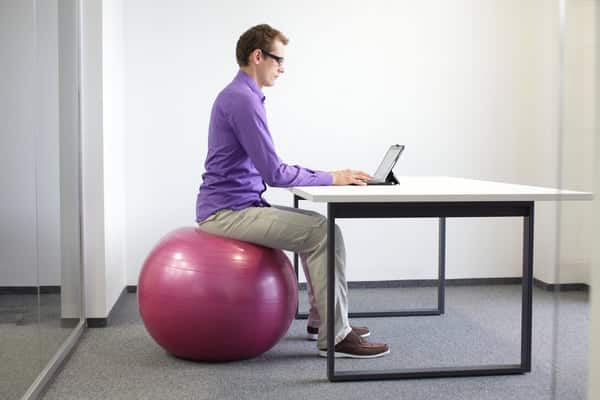Aging & Physical Activity
People who stayed physically active into old age tended to have larger brains than those who did not exercise in the study, published today in the journal Neurology. The brain typically shrinks in late adulthood, and this shrinkage is believed to play a role in age-related memory decline. The
new research is the latest to suggest that exercise is good for the brain as well as the body. “It is pretty clear that exercise is one of the most potent things we can do to protect our brain as we age,” says University of Pittsburgh exercise and aging researcher Kirk Erickson, PhD, who was not involved with the study. Learn about a variety of fitness programs for older adults below.
AARP’s Active for Life (AFL) campaign focused on getting sedentary midlife and older adults to engage in moderate physical activity for at least 30 minutes a day, at least five days a week. AFL tested the effectiveness of this physical activity directive by conducting targeted physical activity campaigns in two cities-Madison, Wisconsin and Richmond, Virginia. The local campaigns in each city employed a range of interventions to educate residents about physical activity, provide information about local physical activity programs, and advocate for environmental changes that would make it easier for the 50+ population in each city to walk and bike.
“Most adults understand they should be more active, yet the majority of middle age and older people remain sedentary,” says Robin Mockenhaupt, deputy group director of the Robert Wood Johnson Foundation’s Health Group.
“Through the Active for Life program, we hope to learn how a group-based behavior program and a telephone-based coaching system might be used to help motivate mid-life and older adults to increase the amount of physical activity they do.
We help community-based organizations develop and implement evidence-based programs that promote healthy lives for older adults.
The Leader in Aging Research. NIA, one of the 27 Institutes and Centers of NIH, leads a broad scientific effort to understand the nature of aging and to extend the healthy, active years of life. NIA is the primary Federal agency supporting and conducting Alzheimer’s disease research.
The First Step to Active Health® provides an evidence-based, progressive activity program. The goal of the program is to improve health and functional ability, to promote independence, and to help prevent chronic disease and disability in adults over age 50. The program includes a step-by-step approach to improve your physical abilities with a variety of simple activities, including cardio/aerobic, flexibility, strength, and balance activities. The First Step is an example of a “Best Practice” for older adult physical activity programs as described by the American College of Sports Medicine.
ICAA’s mission is to promote Active Aging as a solution to improving the quality of life for older adults. Our efforts are directed at helping businesses excel in serving the 50+ population, and at helping that population serve itself.Although we are neither a policymaker nor a lobby group, ICAA has been the prime architect of the Active Aging industry, a network spanning 9,200 organizations managing 40,000 locations in 37 countries that cater to the health and well-being of older adults. Through us, organizations that used to work alone now connect with each other in the common purpose of furthering the Active Aging movement: retirement communities with fitness clubs; government agencies with for-profit organizations; wellness professionals with university scholars.

Get Your Free Guide
Learn How to Start a Fulfilling, Impactful Career as a Holistic Health Coach
You’ll learn:
- Why holistic health matters
- If holistic health coaching is right for you
- What career opportunities exist for health coaches
- And more!
There is a fountain of youth. Millions have discovered it – the secret to feeling better and living longer. It’s called staying active. Finding a program that works for you and sticking with it can pay big dividends. Regular exercise can prevent or delay diabetes and heart trouble. It can also reduce arthritis pain, anxiety and depression. It can help older people stay independent.
The National Coalition for Promoting Physical Activity’s mission is to unite the strengths of public, private, and industry efforts into collaborative partnerships that inspire and empower all Americans to lead more physically active lifestyles.
To increase food and nutrition services in home and community-based social, health, and long-term care systems serving older adults.The Center promotes active healthy aging by working to reduce nutrition risk among older adults, especially minorities with health disparities. The goals are to support quality of life, improve functionality, promote independence, and decrease early nursing home admissions and hospitalizations, through better nutrition.
New AGE is a design program for developing therapeutic recreational facilities in conjunction with attractive greenscapes. The concept originated within the green industry where recreation areas are designed for golf courses and sports fields. While community park and recreation areas are often targeted to teenagers and young adults, the New AGE program is specifically focused on improving the health and quality of life of older adults who are living independently, in retirement communities, or in convalescent facilities, providing a green alternative to indoor health clubs and physical therapy settings.
Education on the benefits of regular physical activity:
Helps maintain the ability to live independently and reduces the risk of falling and fracturing bones.
Reduces the risk of dying from coronary heart disease and of developing high blood pressure, colon cancer, and diabetes.
Can help reduce blood pressure in some people with hypertension.
Helps people with chronic, disabling conditions improve their stamina and muscle strength.
Reduces symptoms of anxiety and depression and fosters improvements in mood and feelings of well-being.
Helps maintain healthy bones, muscles, and joints.
Helps control joint swelling and pain associated with arthritis.



